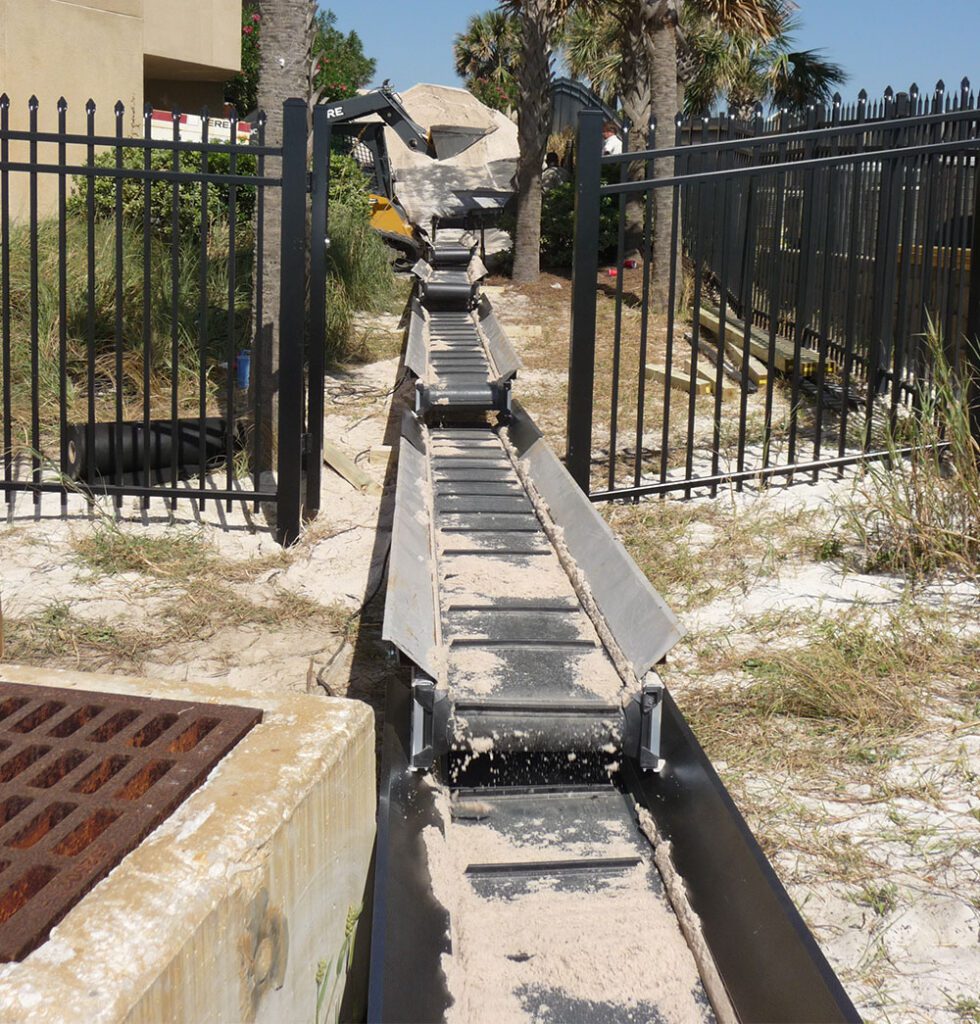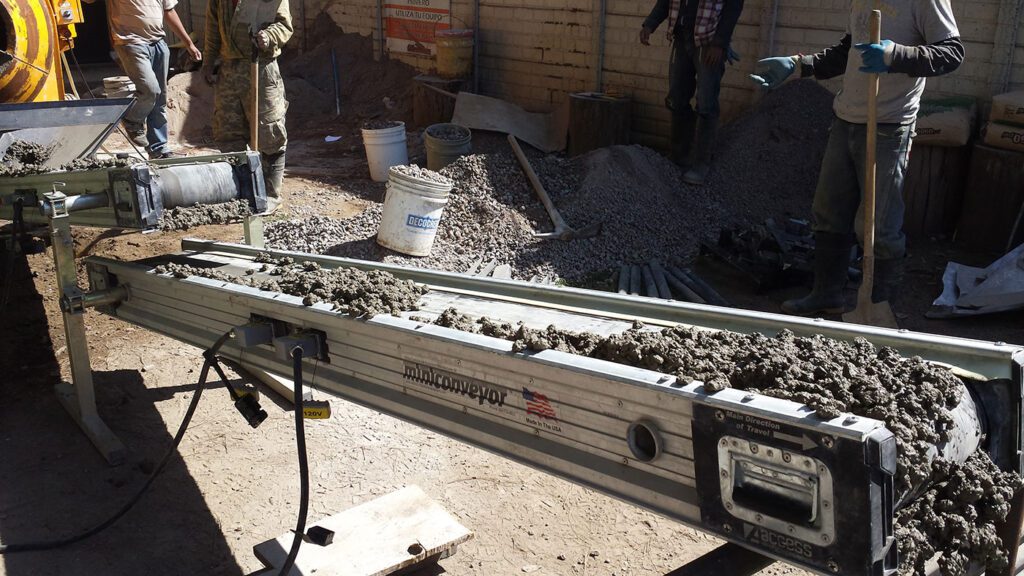As the construction backlog grows and the human resources to do that work become scarcer, it’s more and more important to use the available resources more effectively. As mentioned recently in an interview with Caroline Gumble, CEO of the Chartered Institute of Building. “Wherever I go in the world, people have a problem with a lack of skilled workers.” Keeping that situation in mind, using our available workers to the best of their abilities is increasingly important.

Moving concrete, sand, or gravel around is always difficult but it’s much harder when the construction site is tight and compact. With an estimated 83% of the US population living in urban areas, up from 64% in 1950. Construction sites are becoming smaller and more congested all over the world.
Liquids and semi-liquids materials like concrete, grout and foams can be easily moved through piping systems with various sizes pumps. Pipes are modular, they can be flexible or rigid, making it easy to go around obstacles and over obstructions.
Bulk dry materials, on the other hand, are much trickier to move around. Granted, there are many options available, like excavators and crane but, once the structures of the projects start getting up, they all get much more time consuming and require expensive machinery.
That is where conveyors come into play. A conveyor’s main purpose is to move objects from one location to another. Largely used in industries from gold mining to food packaging. “Conveyors are especially useful in applications involving the transport of heavy or bulky materials.”
The temporary nature of construction work makes it difficult to use standard conveyors systems because of their long setup time. That’s where portable conveyors can be useful. To be the most effective small conveyors need to have these features: portable, powerful, versatile, rugged, modular, and safe. That’s what you need to be looking for when purchasing or renting conveying equipment.
Portability means lightweight and easy to move. On a jobsite, with many obstacles, it becomes a major advantage. With the use of a set of wheels, one worker can position an entire chain of portable conveyors without any mechanical help.
Powerful equal high capacity. This is where the return on investment become significative. Being able to move more material in less time means that the jobs get done faster. As we all know, construction schedules are compressed, and margins are tight. Any advantage gained during operation increases profit for the construction company. The most powerful mini-conveyors units have 550 watts motors and can move up to 25-30 tons per hour. With that kind of material flow, the biggest challenge is to keep the conveyor belt full and to place that material properly.
Using the right tool for the right job is a popular saying in construction. Versatility for a conveyor equals many possible applications. Demolishing a concrete staircase in the basement of a high-rise building? No problems, the small conveyor can convey the debris and load them in haul trucks. Excavating a pool in a townhouse neighborhood with narrows alleys? Bring the dirt to the street on a chain of conveyors. Backfilling columns foundation after a pipe rack has been erected? Load the gravel on a conveyor with an excavator and convey it to the right location. As all these different applications prove, the only limitation of those conveyors is the imagination of the users.
As anyone who spent some time on a construction site can attest, it’s tough. Weather conditions are constantly changing, materials are heavy, and the hours are long. To last in these conditions requires a well-thought-out design and high-quality materials. Motors must be protected and integrated inside the rollers. Wear parts must be available and easily replaceable. Metal parts must be made of aluminum, galvanized steel, or stainless steel to prevent corrosion and rapid deterioration when exposed to water, snow, and ice. All these attributes are, obviously expensive, and raise the price of each unit but it increases the investment value of a conveyor by insuring many years of service.
To make the most of a conveyor system made for construction requires modularity. Granted, mobile stone slinger trucks have their place but having the ability to chain or use in parallel many small conveyors give the users a lot of flexibility. The best system allows the units to be chained together over hundreds of feet to go across entire construction sites or even up multiple flights of stairs. All while being controlled as a single unit, with one control box. They can also be joined together to form unit up to 40 feet. The many accessories available to add on to these features like, hoppers, side extensions and wheels are all created to increase the possible uses cases and increase production.

Last but not the least is safety. User safety is a critical feature of conveyors systems. According to the U.S. Bureau of Labor Statistics, each year, an estimated 9000 workers are injured, and 40 workers dies in conveyor belt accidents. The shear quantity and gravity of the potential incidents make it critical for operators to adopt the safest possible system. Here are a few requirements to reach that objectives: IP65 certified electrical components with GFCI to prevent any electrocution, box shaped structure preventing any objects to enter under or in-between the belt, and emergency stops, at either ends of the conveyors system, to allow the workers to safely turn off the power rapidly.
At the end of the day, the most suitable conveying solution for your project will be dictated by the job itself. Because every project has different requirements. Those requirements and the solution provider you choose will help you find the right product. Whether it’s a new purchase or an addition to your fleet.
¹Construction Briefing, Global Construction Insight, 14-12-23 ²US Cities Factsheet, Center for Sustainable Systems, css.umich.edu ³The Ultimate Guide to Concrete Pumping, https://www.easymixconcrete.com/the-ultimate-guide-to-concrete-pumping ⁴https://en.wikipedia.org/wiki/Conveyor_system ⁵www.bls.gov

